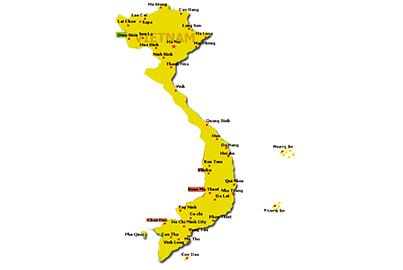
Currently TV standards are based on Standard Dynamic Range metrics which were established more than thirty years ago. In 2016, thanks to new industry standards, HDR enabled TVs will be able to display a significantly expanded range of both colour and contrast, delivering what is known as High Dynamic Range (HDR). In other words, HDR enabled TV’s will expand the contrast ratio and colour space to offer a more realistic and natural image closer to the way your eyes actually see the real world. Deep blacks are combined with very bright highlights to produce a level of reality not previously possible.
Before: Standard Dynamic Range
Resolution: SDTV/HDTV, Colour Space: Rec.709, Brightness: 100-300nit

Now: High Dynamic Range
Resolution: 4K Ultra HD, Colour Space: BT2020, Brightness: 1,000nit

HDR enabled TVs delivers images closer to the way you see the real world.
Ready for What's Next? - Ultra HD Premium
Ultra HD Premium is a new standard put together by the UHD Alliance, a cross-industry body composed of the leading film studios, consumer electronics manufacturers, content distributors and technology companies, with Panasonic as one of its board members. For a TV to qualify as a “Ultra HD Premium “ TV, it must pass performance metrics related to resolution, dynamic range, and colour gamut, amongst others. All products which bear the Ultra HD Premium logo have to pass stringent tests at independent authorized testing centers.
Panasonic’s DX900 is an Ultra HD Premium certified TV.

“ULTRA HD PREMIUMTM” logo is trademark of the UHD Alliance, Inc.
Not All HDR TV’s Will Be Created Equally - Panasonic HDR Premium Technology
1. Groundbreaking Contrast Thanks to Panasonic’s Proprietary Honeycomb-Structure Panel
The DX900 Honeycomb-structure panel uses hundreds of individually controllable lighting zones each rigidly separated from its neighbour to counteract the light ‘blooming’ effect around bright objects commonly seen on LCD panels. In other words, with DX900 TVs, bright areas stay bright while dark areas stay dark, resulting in just the sort of exceptionally high contrast needed to deliver an industry-leading HDR performance.


*Image simulated
2. Controlling Low Brightness Areas with Panasonic New Studio Master HCX+
To accurately show HDR content, a TV must be able to reproduce faithfully both bright highlights and deep blacks while retaining subtle detail and gradation. Panasonic’s DX900 TVs delivers astounding 1000 nit highlights while also addressing a weakness with conventional LCD TVs: that they are poor at delivering rich, detailed blacks or accurate color in low brightness area’s. The combination of Panasonic’s unique new Honeycomb-structure backlight and our new Studio Master HCX+ processor’s accurate signal processing ensures ultra-fine control over each local dimming zone, producing a smoother, more finely expressed black gradation levels. This means you can enjoy deep, rich variations of black level and accurate colors similar to those you get with film in a cinema.

Conventional

DX900

Achieves smooth gradation and intricate black expression in dark scenes.
3. Colour Accuracy Approaching Master Monitor Level
Building on our long experience of providing filmmakers with professional video equipment, Panasonic has introduced to home-use TVs, the colour management system developed for our reference monitors. Newly developed algorithms allow correction of minute colour errors at each point of the colour coordinates map. This professional technology, used in Hollywood production, makes it possible to reproduce colours accurately at every level of brightness.
As one final step to ensure that the HDR performance matches the intentions of the filmmakers, the DX900’s HDR playback has been extensively tuned at Panasonic’s Hollywood Laboratory.

Ron Martin
Vice President and Director
Panasonic Hollywood Laboratory

Faithful colour reproduction is achieved by correcting colour errors at each point of the colour coordinates, from low to high brightness. This produces images approaching the master monitor level.
Conventional

DX900

Colours are expressed in dark areas without collapsing.






